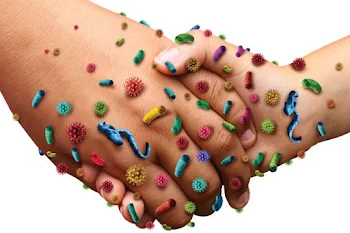Dynamics of disease transmission
DYNAMICS OF DISEASE TRANSMISSION
Description also available in video format (attached below)
Introduction
The dynamics (way of movement) of disease transmission interlock in a cycle shown in below picture-
1) Infectious agent
Any micro-organism that can cause any disease (pathogen)
- HIV (AIDS)
- Plasmodium falciparum (Malaria)
- Mycobacterium tuberculosis (Tuberculosis)
2) Reservoir
Any person, plant, insect, soil, animal. substance or a combination of these, in which an infectious agent lives and reproduce itself in a manner that it can be transmitted to a susceptible (easy to be damaged) host, for example- Female Anopheles mosquito act as a reservoir for malaria parasite.
# Types of Reservoir
- Human Reservoir
- Animal Reservoir
When an animal is responsible to grow & transmit the infection to the human.
a) Bacterial (Plague from Rat)
b) Viral (Rabies from Dog)
c) Protozoa (Leishmaniasis from Dog)
- Non living Reservoir
- Respiratory Secretion
- Blood exposure
- Nose
- Mouth
- Direct contact (Scabies)
- Droplet infection (Tuberculosis)
- Contact with soil (Botulism)
- Inoculation into skin (Folliculitis)
- Vehicle borne (HIV)
- Vector borne (Malaria)
- Air borne (COVID-19)
- Fomite borne (Diphtheria)
- Unclean hands (Typhoid)
- Inhalational route (Tuberculosis)
- Ingestion route (Cholera)
- Urethral & Vaginal route (HIV)
- Babies (Cellulitis)
- Children (Influenza)
- Adults (UTI)
- Peoples having weak immunity (All opportunistic infections)
- Unimmunized peoples (Polio)
Don’t forget to do these things if you get benefitted from this article
o Visit our Let’s contribute page https://keedainformation.blogspot.com/p/lets-contribute.html
o Follow our page
o Like & comment on our post





Comments